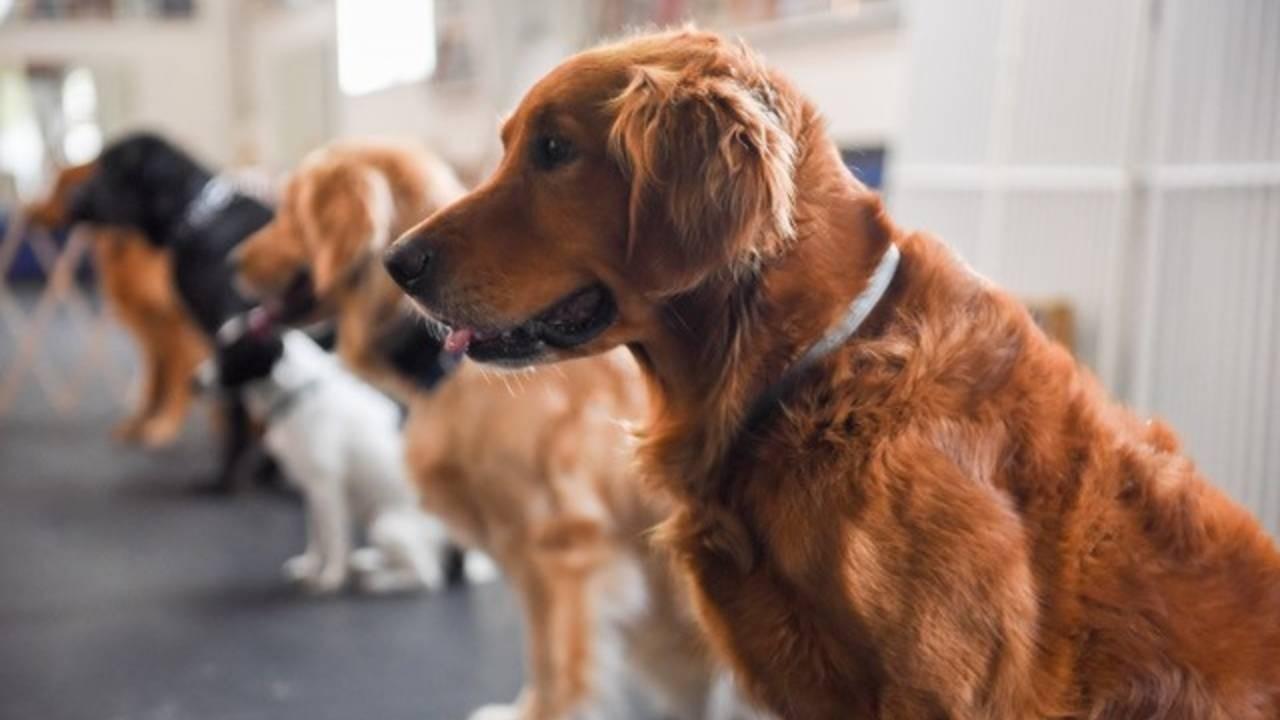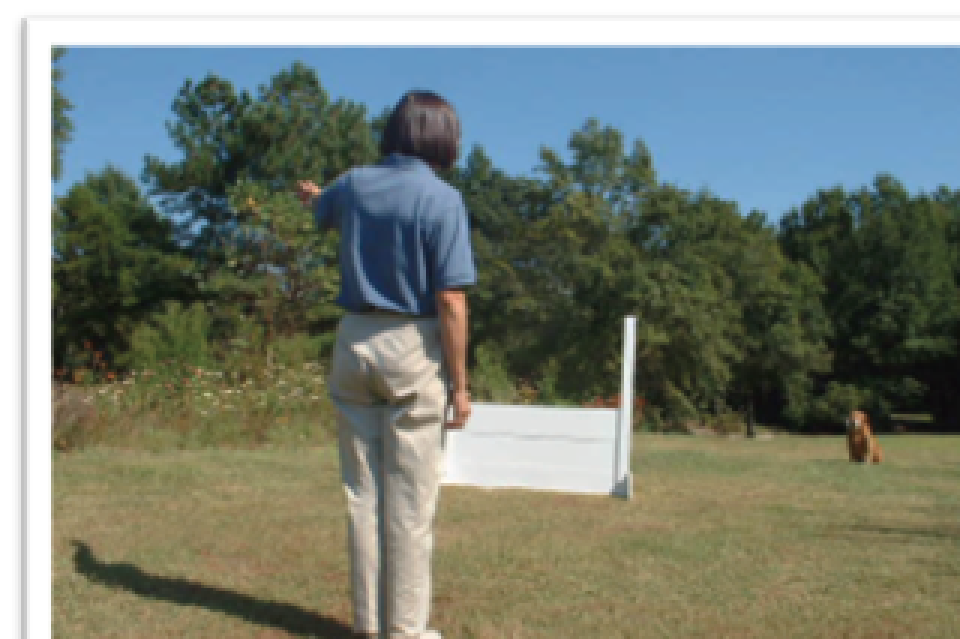A Simple Rule to Train By
Jan 06, 2020
A Simple Rule to Train By
It is frustrating when your dog makes a mistake and you don’t know how to respond. Think about the errors that your dog makes. Much of the time, especially as you teach your dog the advanced exercises, he simply attempts to execute an exercise incorrectly. When that occurs, apply this simple rule; “Tell him he’s wrong, go get him, take him back to where he was last right and simplify the task.”
Tell Him He’s Wrong
This is critical. Your dog deserves to know that he made a mistake. You should say something. Doing so at the moment that he makes the error helps your dog understand what he did wrong. Any noise of displeasure will do such as “no,” “uh-uh,” “yuck,” “stop.” You cannot expect the dog to know exactly when he made an error if you don’t tell him.
The tone of voice you use when you tell him he’s wrong depends on whether you think your dog is trying or not. If you think your dog is genuinely confused, your tone should be gentle and matter-of-fact as you indicate to him that you are displeased. You’re not angry, and you can say “no,” or “uh-uh” without sounding so. You are trying to communicate that the decision he made is wrong, you do not want him to think you are angry.
However, if you think your dog is not trying, that he got distracted or was disinterested as he made his mistake, then your “no,” or “uh-uh” should sound displeased because you are!
It seems rather fashionable these days to say nothing when a dog makes a mistake. Imagine that you have a young child in a classroom, and the teacher asks him the sum of two and three. Your child responds “six.” How long would you keep your child in the classroom if the teacher said nothing in return? You would expect the teacher to give feedback such as “no, that’s not it,” or “try again.” You would also expect the teacher’s response to be affected by your child’s effort level. If your child is trying hard, and having trouble, the teacher’s tone of voice should be encouraging. If your child is fooling around and not trying, you’d expect the teacher to use a tone of voice that lets him know he should try harder! The same is true when communicating with a dog.
Go Get Him
The next step is for you to go take hold of your dog. Taking hold of him will help indicate to him that you are not pleased, especially since this is so different than your enthusiastic response when he performs correctly. It might seem easier to call your dog to you when he makes a mistake. Don’t! Many dogs are sensitive and upset when they make a mistake. If you wait for that sensitive dog to come, he will undoubtedly come, slowly, head down, “wallowing” in his error. You are not interested in having him act like a dying lamb in a hailstorm. You want him to get over the mistake quickly and be ready to try again. Go to him quickly and with a matter-of–fact attitude that says, “you were wrong, now come back here and try again.”
Not long ago I was giving a seminar and a participant’s dog ran around a jump. The owner stopped the dog and I asked her to go get him.
She responded, “He’ll run from me.”
“Well,” I said with some hesitation, “then call him to you.”
“He won’t come; he knows he’s in trouble…”
The reality is that if he won’t come and you can’t catch him, you can’t train him. If you don’t think that your dog will come or allow you to catch him when he makes a mistake, then he needs to be dragging a rope or a leash so that you can. If this means that you can’t do jumping exercises for fear that the leash will get hooked on the jump, so be it. You have no choice until he learns both to come and to allow you to catch him. Take Him Back to Where He was Last Right
Now that you have him by the collar, take him back to where he made the wrong decision. For example, if he left your side on the retrieve over the high jump and headed around the jump, bring him back to the start, sitting next to you. This is where he was “last right.” If he went over the jump, picked up the dumbbell and then started around the jump, you should go get him and take him back to where he picked up the dumbbell (Photos 1 & 2).

Photo 1: Chill tries to come by the jump after retrieving the dumbbell, so I say “no” as I go get him.
Photo 2: I take Chill back to where he picked up the dumbbell.
How you lead him back depends on his effort level. If your dog is genuinely confused and unsure how to perform, then you gently lead him back to try again. However, if you think that he is distracted or not trying, it is legitimate for you to give his collar a “pop” to signal to him that he should be attentive and give you his best effort.

Photo 3: I simplify the task by giving Chill a directed jumping signal before asking him to jump.
Simplify the Task
You will never get in trouble by simplifying the task before starting again. In the high jump example, you may want to sit him where he picked up the dumbbell, return to your side of the jump, and give him a directed jumping signal to help him understand that he should jump on the return (Photos 3 & 4).
If your dog takes the wrong jump on the directed jumping exercise, take him to the go-out location and place him in a sit. Return to the start, then take a few steps toward the correct jump and send him again. If your dog steps in or on the broad jump, return him to start again, but change your location so that you are slightly beyond the last board before you send him again. Be careful. “Simplify the task” means make it a little easier. Don’t feel obligated to go “back to the beginning” by calling the dog straight over the jump or pushing all the broad jump boards together.
Simplifying the task is appropriate whenever your dog executes an exercise incorrectly. However, it is not appropriate if your dog fails to execute the exercise at all. For example, imagine doing a recall. Your dog comes part way to you and stops to sniff the ground. Your dog has failed to execute the exercise. Go get him and make him finish the recall by putting your hands on him and backing up with him. However, if this same dog, when called on a recall heads for a nearby jump on his way to you, he has not failed to execute the task. In this case, he is executing the task incorrectly. Tell him he’s wrong, go get him, and take him back to the start. You can simplify the task by calling him from a shorter distance or by moving him a little further from the jump.
Your dog has failed to execute the exercise if, when practicing directed jumping, he heads for the correct jump, and then cuts inside the jump, choosing not to jump at all. Take him by the collar and make him jump. In this case, do not give your dog another opportunity to refuse to jump. When he jumps the wrong jump, he is executing the task incorrectly; refusing to jump is not executing the task at all.
The next time you ask your dog to perform and he fails, you may not know why he failed. You may not be sure whether he is confused or inattentive, but you can be sure of how to continue. Tell him he’s wrong, get him, take him to where he was last right, and simplify the task.

Every great journey begins with a clear destination - and the courage to name it out loud.
Set Big Goals. Enjoy the Journey.
You’ll learn how to name your goals without fear, use a proven system to make real progress, and build habits that support steady, predictable success.


